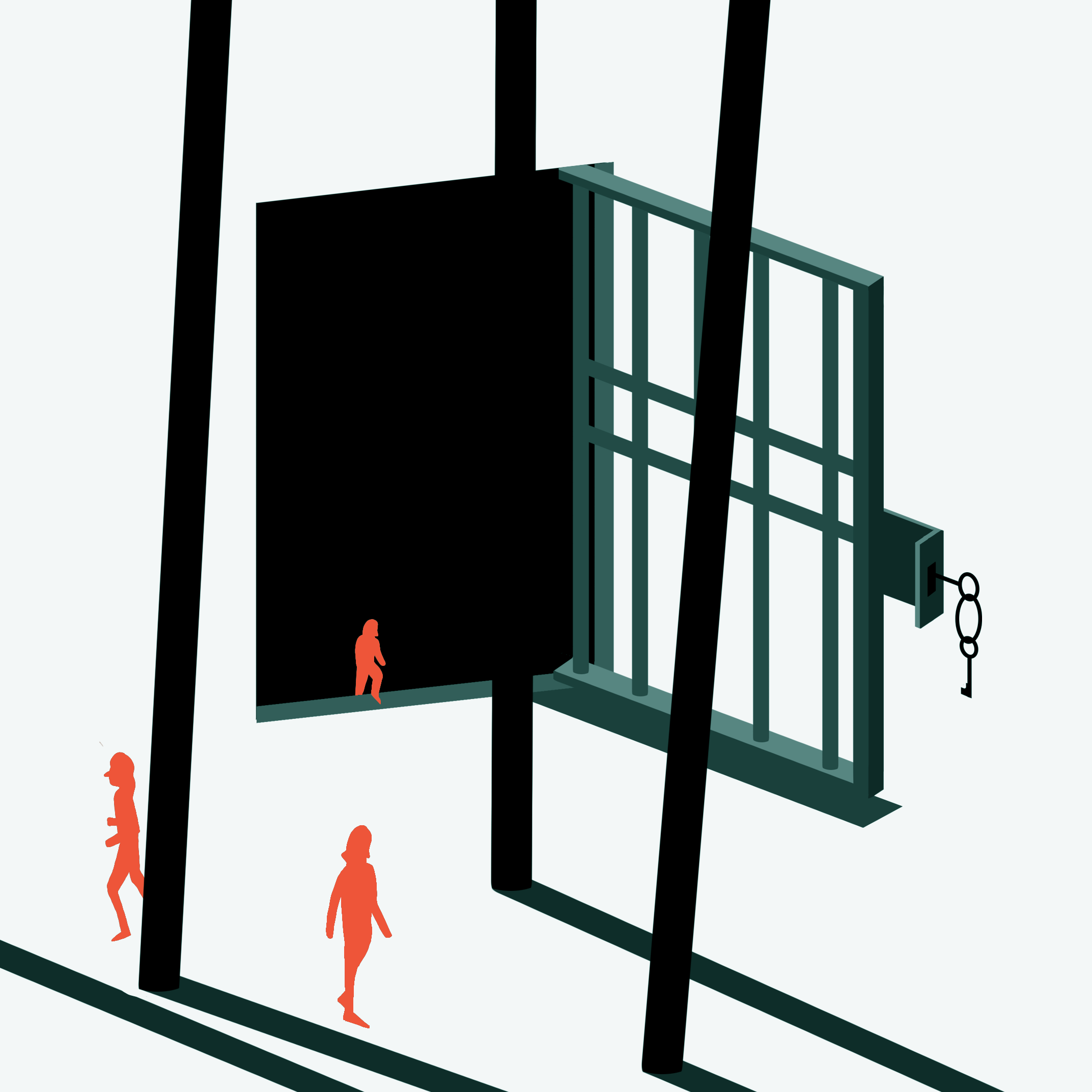How UK prison policy locks women into homelessness
In 2021 it was revealed that 77 per cent of women were being released from jail without a home to go to – and without a roof over their heads, they don’t stand a chance, reports Cherry Casey

In October 2020, the Safe Homes for Women Leaving Prison initiative revealed that six out of 10 women were leaving prison into homelessness. The figures, taken from the 2019 report of the Independent Monitoring Board at HMP Bronzefield, are a damning indictment of the “accommodation pathway”; the path that should lead women from prison into safe, secure housing. The same pathway that, 15 years previously, Baroness Corston deemed to be “most in need of speedy, fundamental, gender-specific reform” in her review of women with vulnerabilities in the criminal justice system.
Following the SHWLP revelation, the issue of women prison leavers and homelessness received some time in the spotlight and in April 2021, the Justice Committee launched an inquiry into women in prison (the report for which is due this Easter).
Hearing from those at the forefront of the field, from charity executives to prison workers, the overwhelming message, as put by Dr Jenny Earle on behalf of SHWLP, was that “without housing you do not stand a chance. You cannot sign up with a GP; you cannot get your kids back; you cannot get a job; you cannot enrol in longer–term mental health and drug and alcohol support.” Housing is the cornerstone of rehabilitation: the reoffending rate for men and women without settled accommodation is 65 per cent.
However, in November 2021, it was revealed that the picture had become even more bleak: 77 per cent of women were being released from prison without safe and secure housing, according to the latest IMB report at Bronzefield. One reason for this increase, the report suggested, is the reorganisation of probation services, which resulted in the in-prison accommodation services – previously provided by St Mungo’s homeless charity – being removed.
Probation reunification – where the probation sector was renationalised after years of privatisation – took place in June 2021, and was something that charities such as Women in Prison (WIP) had been “crying out for for years”, says Dr Kate Paradine, its chief executive. “However, nobody should have expected that you just click your fingers and reunify a public service that has been totally ripped apart over the course of five years,” she adds.
There have been various “teething issues” in the reorganisation, she says, from IT issues with the monitoring and referral systems, to an increased workload for public-sector services, which have been difficult to manage.
However, this particular fallout – the removal of St Mungo’s accommodation services – has been highlighted as one in most urgent need of rectifying by SHWLP. In its most recent declaration, in which they “call on the government to stop setting vulnerable women up to fail”, one of their “key asks” is that specialist brokers for housing are implemented in every women’s prison.
However, while these problems are no doubt significant, they can be attributed to the transition period of a new system which, once bedded in, looks set to benefit men and women in the criminal justice system. What is proving more challenging is receiving recognition (and subsequent action) at government level of the complex, gender-specific housing needs of female prisoners. Until these needs are understood, the “scandalous and preventable” problem of women prisoners and homelessness, says SHWLP, will never be resolved.

This includes, for instance, the fact that as women make up so little of the prison population (per cent) and there are fewer women’s prisons than men’s, female prisoners are more likely to be scattered across the country; a woman from Wales will be likely sent to Styal prison in Manchester, for instance, or Eastwood Park in Bristol. That not only adds considerable complexity when it comes to resettling them on release (as the housing legislation and provision may differ significantly from where she is imprisoned), but also means that women are less likely to receive visitors. And this is important, says the Prison Reform Trust (PRT), as prisoners who receive visits from family members are 31 per cent less likely to reoffend than those who do not.
And women are more likely to be primary carers of children (although many, says Earle, may not reveal this while in prison, for fear of social services’ intervention). This again leads to specific housing complications, not least the devastating catch-22 situation, highlighted by the 2019 Farmer Review, in which women are not considered eligible for family-sized accommodation because they do not have custody of their children – but are also not allowed to have their children returned to them, as they do not have adequate housing.
When a woman has a brash, difficult or ‘hard’ exterior it often stands in the way of her being seen as a ‘deserving’ victim
Women are also much more likely than men to experience “hidden homelessness”; choosing any option to secure a roof over their head to avoid sleeping rough. For many, this means returning to harmful or abusive relationships; to environments where there is substance misuse or exchanging sex for accommodation.
Giving evidence at a Justice Committee meeting in September, Dr Amanda Brown, who works at HMP Bronzefield, explained: “Even if [women] manage to get stabilised and sorted out in prison, if they are there long enough, which often they are not, they tell me that if they go back to being homeless they will almost certainly be back on drugs again. What is the point? What are we trying to do? It really, really upsets me.”
Alongside the practical considerations of women in the criminal justice system, it is crucial that their “histories, that very likely led them into offending and into prison”, are understood, says Earle. She adds: “Unless those are tackled along with the provision of a roof over their heads, women will be back to square one.”
In the October meeting of the inquiry, Laura Seebohm, then executive director at the charity Changing Lives, spoke eloquently on the vital importance of understanding the trauma experienced by many, if not all, women in the criminal justice system. Elaborating, she explains: “When we looked at all the women we were working with [at Changing Lives] at any one time, a very significant proportion of them experienced childhood sexual abuse.”
Early abuse leaves a person more vulnerable to an abusive relationship in later life, she adds, citing research by Dr Stephanie Covington that suggests that, while the greatest risk to a teenage boy is from someone external to them, eg, gang violence, for teenage girls it is from someone they are in a relationship with.
And while neither risk is “preferable”, Seebohm explains, when abuse comes from someone who is supposed to love us, and “trauma is persistent and ongoing, it really fundamentally changes the way we see ourselves and other people and our place and value in the world.” Which is why, “when we talk to women we work with about when they first experienced domestic abuse, it's their first relationship, early on”.
And abusive adult relationships are not only deeply traumatic and dangerous on a physical and psychological level, but often lead to offending, with statistics suggesting that 48 per cent of women in prison committed crime to support someone else’s drug use. “[I’ve worked with a] number of women who've been forced to go out and get money for drugs in whatever way she can, and be at risk of physical or sexual violence if she doesn’t,” says Seebohm.

This cycle of trauma and abuse creates fertile ground for addiction, says Seebohm; a means by which “to cope with life”, which, in turn brings the accompanying lifestyle, including offending and homelessness. But for many women, by the time they have reached this point, they are often “no longer seen as victims … they’re seen as the problem and I think viewed more harshly than men, because that's not how women ‘should’ behave,” says Seebohm. When a woman has a brash, difficult or hard exterior, she adds, it often stands in the way of her being seen as a deserving victim. “And I see that kind of stigma and judgement of the women I work with continuing to this day.”
Key to helping these women rehabilitate and reintegrate into society, says Seebohm, is establishing strong, trusted relationships; offering continuity and a space where they will be heard. “By just sitting beside women and listening, you're throwing them a lifeline.” A key barrier to making these relationships, however, is short custodial sentences. “[Short sentences are] hugely damaging,” says Seebohm. “I just think for society, there is no benefit in it. We know it increases risk of reoffending, it's hugely expensive and it's a waste of their lives.”
Short sentences are hugely damaging. I just think for society, there is no benefit in it. We know it increases risk of reoffending, it’s hugely expensive and it’s a waste of their lives
This sentiment resounds across specialist women’s services, charities and prisons themselves. According to statistics released by PRT, 73 per cent of prison sentences given to women are for six months or less, which – while potentially long enough for her to lose her house, her children and her employment – is not long enough to engage with any meaningful rehabilitation efforts; education, counselling or indeed, help with housing. Short sentences have a high reoffending rate (67 per cent for sentences of six months or less, compared with 38 per cent for those served with a court order), leading to a churn of women in and out of prison.
Sharon Pickup, who served a one-year prison sentence in 2017, and today works as a team leader on the MOJ contracts with social enterprise the Wise Group, agrees that short sentences are hugely problematic: “By the time you get into prison, ‘on-board’ and settle in, it’s time to go,” she says. “There’s no clear pathway from there, no time to engage with services or make those links.”
During her own sentence, Pickup was approached by Ross Stoker who at the time worked on the through-the-gate project for the Wise Group, and offered to help her find somewhere to live upon her release. “At the time, I didn't really trust anybody so I didn't believe anything he said, but that’s just the way it is when you’re in prison,” says Pickup. But Stoker worked to ensure she was helped into safe accommodation that was away from Harrogate where, if she had returned, she “would have ended up back in the same circles and doing the same things I was before”.
“Stoker helped me to save my own life,” says Pickup. “I was given the platforms to look at myself properly and identify where I was going wrong and make a plan for where I want to be. [Without it] I wouldn’t be sat here today.” Crucially, says Pickup, Stoker was “always there in the background” long after her release, checking in on her to see how she was doing, even suggesting she apply for the job at the Wise Group.
That kind of wraparound care, extending beyond finding a house, is something that Pickup says there is a “massive need” for in order to tackle the issue of women prisoners and homelessness. “There were women coming in and out of prison on a revolving door, because they’d exhausted the housing options everywhere else,” she says. “They’d come from the care system, had chaotic lives, never had any insight or skill sets to manage a tenancy… so they’d get themselves into worse situations, then be homeless.”
I’d see people going in and out and I was asking them, ‘Why? What are you doing? You were doing so well, you were drug-free, mentoring, had qualifications?’ And they’d say ‘I went out there and I was judged’
Women would also find themselves back in prison, says Pickup, because it was the one place they found a sense of belonging. “I’d see people going in and out and I was asking them, ‘Why? What are you doing? You were doing so well, you were drug-free, mentoring, had qualifications?’ And they’d say, ‘I went out there and I was judged. I didn’t fit into any boxes, can’t get a job, got nowhere to live. I’m safe in here, I’ve got purpose. I feel free to be myself. I’m better off in here’.”
Seebohm agrees that a sense of belonging is crucial to rehabilitation: “The isolation in being ‘plonked’ somewhere with absolutely no ties is really difficult in terms of reoffending.” In her testimony, Brown cited one “very, very damaged woman” who had been placed in unsuitable accommodation in an area where she knew no one. “If that woman doesn’t end up back in prison,” she said, “it will be a miracle.”

The adjustment from custody to community is complex; to effect the wraparound care Pickup describes, a joined-up strategy across all agencies involved – prisons, local authorities, specialist women’s services and housing associations – is desperately needed. To this end, in 2021 SHWLP worked with frontline agencies to create the Women’s Prison Release Protocol; a model that all agencies can follow to implement a successful, whole-system approach. It is hoped that this protocol is implemented across London boroughs at least, perhaps nationwide also.
The protocol is based on the approach used by Lambeth, a local authority that, says Earle, “has been very diligent about establishing a system for identifying women [in the criminal justice system]”. They understand, not only the experiences of these women, she says, but the ripple effect that not having adequate housing has: on children, on mental health, on anti-social behaviour and on reoffending rates.
The day of release can be extremely stressful, with the woman needing to attend probation, sort out housing, set up benefits, register with a GP, let alone deal with the emotional elements of being released from prison
One such understanding is that timing is everything and Lambeth works to identify any woman who will be released into the borough, prior to her release. This is crucial, says Frederika Thorne, senior services manager at WIP, as waiting until a woman is “through the gate” is often too late.
“The day of release can be extremely stressful,” she says, with the woman in question needing to “attend probation, sort out housing, set up benefits, register with a GP, let alone deal with the emotional elements of being released from prison, and the fear of not knowing what you’re coming out to”. Thorne has sat in the housing department with clients for up to nine hours in the past, only to be told there is nothing available. In one instance, she asked the staff member if her client was to “sleep on the streets?” The answer was, “she won’t be the first”. Some councils are better than others, says Thorne, “but these often are the kind of attitudes that we’re faced with”.
Lambeth is also successful in its approach because it has designated a single point of contact for the task of resettling those in the criminal justice system – the “prison release navigator”. This approach offers a sense of continuity, allows for a fuller understanding of an individual’s needs and, ultimately, offers more effective help in overcoming barriers to entering accommodation.
And these barriers, says Thorne, can be complex and vast. “To be housed by the council you have to tick different boxes [and be deemed to demonstrate] a certain level of vulnerability,” she says. “The threshold to reach this is ridiculous. I’ve worked with so many women who don’t, yet they are some of the most vulnerable clients I’ve ever worked with.” One such “box” is that the individual is not “intentionally homeless”.
“We’re often told at the local homeless persons unit that our client should have known when they committed a crime that there was a chance they’d go to prison and lose their accommodation, and so they have made themselves intentionally homeless,” says Thorne. “This is unbelievably unfair when you think of the core reasons women get swept up into crime – ill mental health, substance misuse and trauma. This idea of being doubly punished – being sent to prison for the crime and then being considered intentionally homeless as a result – is a huge barrier.”
This idea of being doubly punished – being sent to prison for the crime and then being considered intentionally homeless as a result – is a huge barrier
This unfairness, however, stems not simply from a lack of compassion, but from the fact that, quite simply, “there’s not enough houses, so they have to turn away as many people as possible”.
Paradine agrees that a lack of social housing is a key driver behind the problem. “There needs to be a really clear understanding that women’s organisations can’t create social homes, and actually the problem is in supply of options,” she says, pointing to the fact that, while social homes are not being built “at the rate they need to be” there is a – highly controversial – plan to build 500 new women’s places in prison.
There also needs to be “less game-playing with statistics”, says Paradine. “It does worry me that there is an attempt to portray [the situation] as not quite as bad as it is.”
Debates over statistics are particularly contentious; indeed, the MOJ challenged the 77 per cent figure highlighted in the IMB in 2021. But as Alison Keightley from the IMB at Bronzefield explained at a SHWLP event in January, such discrepancies often boil down to differing definitions of what constitutes a “satisfactory housing” outcome for women leaving the criminal justice system.
In comparing 29 women who were recently released from HMP Bronzefield, the prison’s data on housing outcomes considered only seven of them to have satisfactory accommodation on discharge, while the probation service felt it to be 21. Of these 21 women however, Keightley explains, one had “no idea where she would be sleeping”, merely an appointment with the housing department later that day; one was a domestic abuser who was being released back to the home where her victims lived, while the third was a woman returning to her previous accommodation, “which in fact turned out to be a tent”.
As such, another key ask of government from the SHWLP is the collection and recording of data disaggregated by sex to facilitate a greater understanding and therefore management of the problem; to ensure all agencies are working from the same place and, most importantly, to ensure no more vulnerable women are categorised as “safe” when they are arguably far from it.
Ultimately, bodies such as SHWLP, PRT and WIP are urging government to understand that this problem, while certainly complex, is not vast in scale. It is not deeply entrenched – yet. But if it is ever to be resolved it desperately needs drive from senior government; something that has so far been lacking. Particularly with the creation of the protocol, says Earle: “We are doing everything we can to show [government] what needs to be done. Why don’t they seize it?”
Join our commenting forum
Join thought-provoking conversations, follow other Independent readers and see their replies
Comments



Bookmark popover
Removed from bookmarks